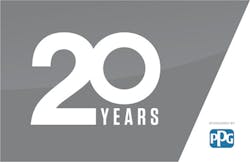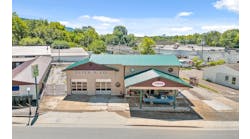As part of FenderBender's 20th anniversary celebration sponsored by PPG, we take a look back at the collision repair industry through the eyes of some of its largest influencers.
George Avery began his career working as a body technician and painter in Southern California. He was able to take this first-hand knowledge of the auto body industry and apply it to his work at State Farm Insurance, where he held various positions in estimating and management over a span of 38 years.
As a past president of the National Auto Body Council and chairman of the Collision Industry Conference, Avery’s expertise and passion for the collision industry is second to none. Avery retired in June 2016, and he now does some consulting, emcee work and motivational speaking across the country.
How does the industry today compare to what it was like 20 years ago?
Well, it’s totally different, and I think the big difference lies within processes and procedures. Twenty years ago, people fixed cars in a variety of different ways and there wasn’t a tremendous amount of technology involved. Today, everything—the technology in the cars, the material that they’re made out of—is more complex.
It’s all a result of what customers want. They want good gas mileage, so cars are made lighter. They want to be safer, so there’s a number of safety components in place in case of a crash. They want to do everything they can to avoid a crash, so that’s why there are things like lane departure warnings and more complex braking systems.
I’m in awe of technicians today. What they have to know, their skills, their knowledge, their ability to perform a multitude of repairs … It’s amazing.
Another shift is the change in the interaction between stakeholders. Early on as an insurer, I never went to a body shop function. You really didn’t talk to each other very much. Now, every discipline comes together. Even though some of it can be frustrating, because not everyone gets along or has the same thinking, I think we all talk more today than we ever did before.
What has been the biggest game-changer over the past 20 years?Cycle time is one of the biggest things to hit the industry. Nobody really watched that 20 years ago.
All of a sudden, there was a focus on cycle time, and it really was a win-win-win situation. It’s a win for the customer, because they get their car back quicker. It’s a win for the shop, because they get more jobs through so they can make more profit. And it’s a win for the insurer, because they can close the file and not rack up a rental bill they have to pay.
This shift brought a lot of things with it. It brought new thinking on efficiency processes—Six Sigma, how to better lay out a body shop, the acquisition of parts—really, the whole thing.
I think cycle time is the one thing that touches everybody and everything in the process, and it has been one of the biggest sources of improvement in the industry.
What do shops need to do to be successful over the next 20 years?
Most people would say that shops need to adapt but I think that’s old thinking. What really needs to happen is every stakeholder needs to find their place.
I can only imagine when we went from horse and buggy to a car. People were probably asking, “What do wagon makers need to think about?” Well, stakeholders need to do the same thing and think about what their place is, what’s going to happen to their role, and how it’s going to look different.
Repairers need to be open to finding what their role is in the future. There are three things that they have that nobody else has: They have the location to perform the repair. They have trained technicians to perform the repair. And they have the tools to complete the job. No one else has that, so as long as a shop can find their place in the future, it will be fine.




